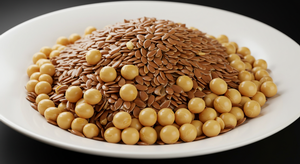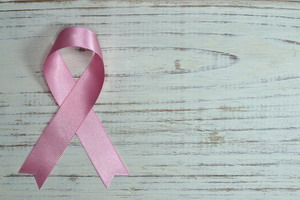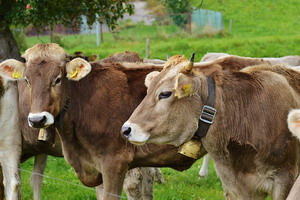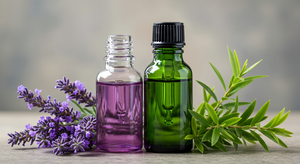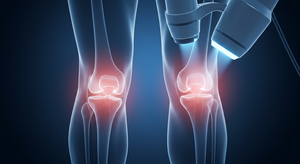|
Several patients have asked me questions about est
 rogen hormone and how it might affect their health, particularly cancer risk. Many cancers are estrogen-sensitive, meaning that estrogen is like fertilizer for them. Estrogen is one of many different hormone-disrupting chemicals. At last count, the EPA estimates there are over 85,000 different hormone-disrupting chemicals we are commonly exposed to that will affect our health. This topic has become increasingly relevant as research continues to reveal how everyday exposures in our modern environment may be affecting our bodies in ways we’re only beginning to understand. rogen hormone and how it might affect their health, particularly cancer risk. Many cancers are estrogen-sensitive, meaning that estrogen is like fertilizer for them. Estrogen is one of many different hormone-disrupting chemicals. At last count, the EPA estimates there are over 85,000 different hormone-disrupting chemicals we are commonly exposed to that will affect our health. This topic has become increasingly relevant as research continues to reveal how everyday exposures in our modern environment may be affecting our bodies in ways we’re only beginning to understand.What Are Hormone-Disrupting Chemicals?
Hormone-disrupting chemicals, also called endocrin Your body’s hormonal system is incredibly precise, w The Natural vs. Synthetic Distinction Not all estrogenic compounds are created equal. It’s important to understand the difference between naturally occurring plant compounds and synthetic chemicals. Phytoestrogens are naturally occurring compounds In contrast, synthetic hormone disruptors from petr Where Are You Exposed? The concerning reality is that we encounter these chemicals daily through multiple pathways: In Your Kitchen: Plastic food containers, especially when heated Canned foods (many cans are lined with BPA-containing plastic) Non-stick cookware Plastic water bottles In Your Bathroom: Conventional shampoos, conditioners, and lotions containing parabens and phthalates Cosmetics and makeup Products with synthetic fragrances Some brands of dental floss Around Your House: Cleaning products with synthetic chemicals Air fresheners and fabric softeners Vinyl shower curtains Synthetic carpets and furniture treated with flame retardants In Your Food Supply: Conventionally raised beef (which may contain growth hormones) Dairy products from cows treated with synthetic growth hormones Produce treated with certain pesticides The Cancer Connection The research linking hormone-disrupting chemica Hormonal Pathways: Many cancers, including breast, prostate, and endometrial cancers, are hormone-sensitive. Chemicals that mimic estrogen can fuel the growth of these cancers. Epigenetic Changes: These chemicals can alter how your genes are expressed without changing the DNA itself, potentially turning on cancer-promoting genes or turning off protective ones. Immune System Disruption: Some chemicals interfere with your body’s natural cancer surveillance systems. Timing Matters: Exposure during critical developmental periods – in the womb, during childhood, or puberty – can have lifelong effects on cancer risk. Livestock and Hormones: Separating Fact from Fic There’s significant confusion about hormones in our food supply, so let me clarify the facts: Beef and Dairy: Growth hormones are still permitted and commonly used in cattle production in the United States. These include both natural hormones like estradiol and synthetic compounds. European scientists have concluded that some of these hormones pose cancer risks, which is why the EU banned their use. Chicken and Turkey: Despite what 77% of Americans believe, no hormones have been used in poultry production since the 1950s when the USDA banned them. Pork: Similarly, hormones are not permitted in pig farming in the United States. Fish: Hormone use varies by region and farming practices, with regulations differing significantly between countries. Special Considerations: Essential Oils and Progesterone Two areas that often surprise my patients are essent Certain essential oils, particularly lavender and tea tree oil, contain compounds that can mimic estrogen and block male hormones. While research on cancer risk is limited, these oils have caused hormonal effects in children, including abnormal breast development in boys. I recommend using these oils sparingly and avoiding regular use on children. Regarding progesterone therapy, the news is more enc Practical Steps to Reduce Your Exposure The good news is that you can significantly reduce your exposure with some simple changes: In the Kitchen: Replace plastic food containers with glass or stainless steel. Choose fresh or frozen foods over canned when possible. Never heat food in plastic containers. Use stainless steel or cast iron cookware instead of non-stick. Install a quality water filter. Personal Care: Choose products labeled “paraben-free” and “phthalate-free.” Avoid synthetic fragrances – look for “fragrance-free” or naturally scented products. Use simple, minimal-ingredient products when possible. Around the House: Replace conventional cleaners with simple ingredients like white vinegar and baking soda. Skip fabric softeners and dryer sheets – use wool dryer balls instead. Choose organic cotton or hemp shower curtains over vinyl. Avoid air fresheners and plug-ins. Food Choices: Choose organic or hormone-free beef and dairy when possible. Buy organic produce, especially for items on the “Dirty Dozen” list. Remember that chicken and pork are already hormone-free by regulation. A Balanced Perspective While this information might seem overwhelming, remember that your body has remarkable resilience and repair capabilities. The goal isn’t to create anxiety but to empower you with knowledge to make informed choices. You don’t need to change everything at once – start with the easiest swaps and gradually transition to safer alternatives as products need replacement. Focus on the changes that will have the biggest impac Moving Forward As research continues to evolve, we’re learning m Remember, cancer prevention is multifaceted – redu Take care, David Ellen Part of the process of moving my mother to a memory care facility, is now cleaning out her place. That includes
|
Categories
Estrogen 2



